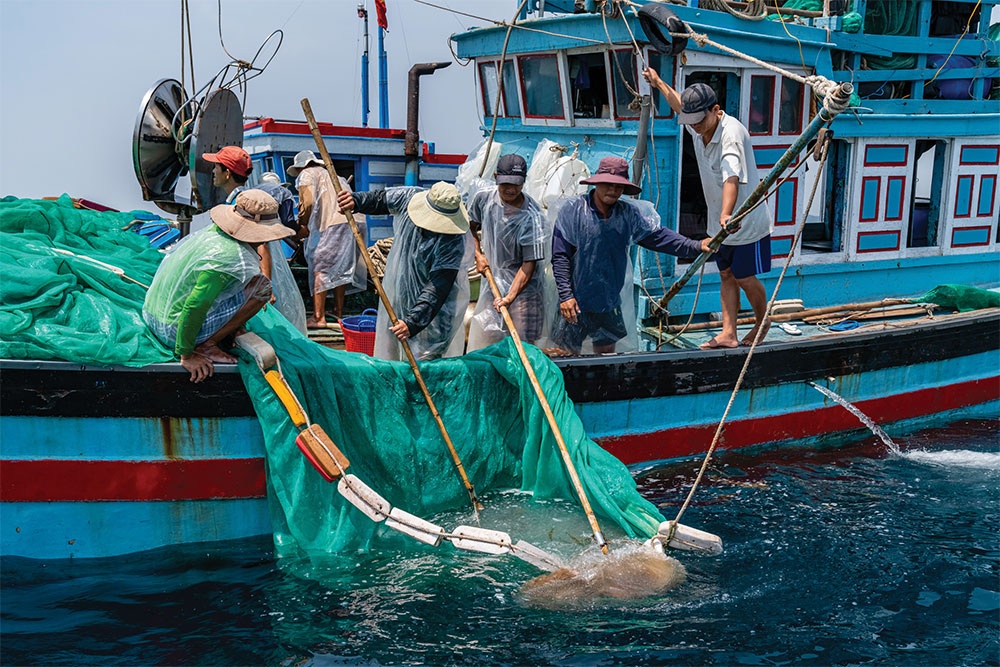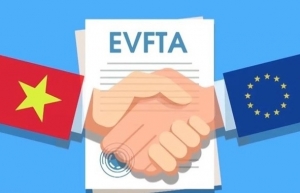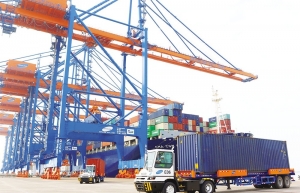EVFTA advantages threatened by tough competition
Vietnam, one of the largest basa fish exporters to the European market, has reached a breakthrough as the export value to this market reached nearly $122 million in just seven months this year, an increase of 91 per cent over the same period last year.
 |
| EVFTA advantages threatened by tough competition - illustration photo |
Inflation and rising food prices are important factors in helping basa to become popular in European meals. Eurostat’s report shows that inflation in the eurozone was at 9.1 per cent in August, an increase of more than 0.2 per cent compared to the previous month, while in 2021 this rate stood at 3 per cent.
Contributing to the growth of Vietnamese basa exports, the Russia-Ukraine conflict led to the EU issuing a ban on seafood imports from Russia, the largest source of white fish for the bloc, opening up great opportunities for Vietnam. Vietnamese basa fish has since then replaced major seafood suppliers in the EU.
At the same time, the EU-Vietnam Free Trade Agreement (EVFTA) also influenced basa exports, which are taxed according to a 3-year roadmap since 2020. The tax rate of 5.5 per cent on frozen basa will be reduced to zero after three years while some regional competitors such as Indonesian fish will still be subject to a tax of 5.5 per cent.
With unprecedented market opportunities, the basa industry can achieve high export growth in 2022, possibly cashing in $2.6 billion according to the Vietnam Association of Seafood Exporters and Producers’ (VASEP) calculations.
However, exporting Vietnamese basa to Europe is not always successful. The EU used to be Vietnam’s largest import market, but it dropped sharply a decade ago. Last year, basa exports to the EU reached just over $106 million, accounting for 7 per cent of Vietnam’s total export value from basa.
Northern Europe has the largest presence of basa products of Vietnamese origin in the EU, but its market share is modest, only at 0.4 per cent in Sweden, 0.9 per cent in Denmark, and 2.6 per cent in Norway. Nordic countries import Vietnamese pangasius mainly through intermediaries within the bloc, such as the Netherlands, Germany, Belgium, and France, according to the Trade Counselor in Sweden.
This year, it is forecasted that for the first time, Vietnam’s seafood industry will surpass the export milestone of over $10 billion, an increase of about 12-15 per cent compared to 2021. However, the sharp and rapid deceleration in the shrimp industry also causes issues.
Le Van Quang, chairman of Minh Phu Seafood Group, said, “Vietnam may lose its leading position in shrimp processing in the next 5-10 years. Currently, the production cost of raw shrimp in Vietnam is about 30 per cent higher than that of India and Indonesia, and even 2.5-3 times higher than that of Ecuador, due to the lack of processing materials and the small scale of production.”
Currently, the tax rate for black tiger shrimp from Vietnam to the EU is zero, while the tax rate for frozen whiteleg shrimp will be gradually reduced to zero until 2025. Dependence on imported shrimp materials also leads to risks regarding the rules of origin, reducing the opportunity to receive tax incentives from EVFTA. The agreement stipulates that the cost of external materials does not exceed 10 per cent for the cumulative origin.
According to the VASEP, shrimp exports in the first six months of 2022 reached $2.3 billion, up 31 per cent over the same period last year. But shrimp catches fell by about 2.6 per cent on-year to just two million tonnes. The output of farmed shrimp was not enough for factories, even though it increased by nearly 11 per cent to 448,000 tonnes.
The tariff advantages from the EVFTA helped Vietnam in maintaining its seafood export turnover to the bloc last year, when the figure reached over $1 billion, up 12 per cent. However, many analysts still consider this an unsustainable growth rate.
Vietnam’s seafood exports to the EU have decreased gradually in the years 2017-2020, after increasing from $1.22 billion in 2016 to nearly $1.5 billion in 2017. In 2020, exports to the EU only reached a little more than $958 million, the largest decrease in the 2017-2020 period, which is mostly due to the pandemic, the European Commission’s yellow card for illegal, unreported, and unregulated fishing, and Brexit. However, the EU is still a large market with a per capita seafood consumption of up to 24.35kg per person per year.
Le Thanh Hoa, deputy director of the Department of Agricultural Product Processing and Market Development under the Ministry of Agriculture and Rural Development, said, “EU businesses can exploit the EVFTA through investments in aquaculture, fishing, and seafood processing in Vietnam. They can also take advantage of the available infrastructure of Vietnam to develop aquatic resources that cannot be farmed due to the characteristics of the growing environment or have to be imported due to biological limitations, without wasting time and funds.”
Hoa added that EU investors can also profit from a surplus of by-products from seafood processing which could be used to make value-added products, such as diesel oil from fish fat and omega 3 from tuna. “This will be a driving force to encourage European countries to invest more in Vietnam’s seafood,” he said.
 | Room for agro-exports to grow through EVFTA deal While the export turnover of agro-products has taken off since 2020’s arrival of the EU-Vietnam Free Trade Agreement, ample room still remains neglected due to failure to meet the demand for quality. |
 | Evidence adds up for quality advantages within EVFTA Just two years in entry into force, the EU-Vietnam Free Trade Agreement (EVFTA) has brought large benefits to both the Southeast Asian market and the bloc of nearly 450 million people. |
 | Fulfilling the roadmap for a fruitful EU trade future Bilateral trade between the EU and Vietnam has been advancing in the right direction since the EU-Vietnam Free Trade Agreement took effect. Bernd Lange, chairman of the European Parliament’s Committee on International Trade, spoke with VIR’s Hara Nguyen about the progress so far and the further advantages ahead. |
What the stars mean:
★ Poor ★ ★ Promising ★★★ Good ★★★★ Very good ★★★★★ Exceptional
Related Contents
Latest News
More News
- First members of Danang International Finance Centre revealed (December 22, 2025 | 17:39)
- Human-centred governance seen as key to AI development (December 19, 2025 | 18:19)
- Top 10 notable events of Vietnam’s industry and trade sector in 2025 (December 19, 2025 | 14:00)
- Tungsten surges to 12-year high as world enters a new 'black gold' race (December 18, 2025 | 17:27)
- Vietnam’s coffee exports set new record despite price pressures (December 18, 2025 | 17:13)
- Garment and textile sector seeks new growth after volatile year (December 18, 2025 | 17:01)
- VinSpeed and Siemens strengthen cooperation for high-speed rail development (December 18, 2025 | 16:53)
- High-tech adoption for TH true MILK (December 18, 2025 | 13:39)
- Takeda supports health resilience amid climate change challenges (December 18, 2025 | 12:39)
- Mondelez Kinh Do - a chapter of purpose-led leadership in Vietnam (December 18, 2025 | 09:44)

 Tag:
Tag:






















 Mobile Version
Mobile Version